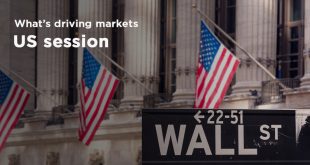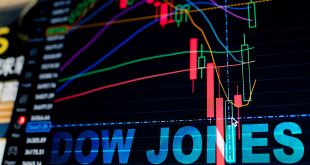Fed’s Aggressive Rate Cut Signals a New Era
Last week, the Federal Reserve made a significant move by cutting its policy rate by a substantial 0.5%. This marked a significant departure from its previous stance of aggressive rate hikes aimed at curbing inflation. The larger-than-expected cut signals a critical turning point in the monetary policy cycle and a commitment to avoiding a potential economic downturn.

Key Implications of the Rate Cut: Soft Landing More Likely Now:
The Fed’s proactive approach significantly increases the chances of a soft landing. By lowering borrowing costs for consumers and businesses, the central bank aims to stimulate economic growth and avoid a recession. Historically, rate-cutting cycles that coincide with a strong economy have led to robust equity returns. While valuations are currently elevated, the potential upside for stocks remains significant. The rate cut is likely to favour cyclical, mid-cap, and high-quality dividend-paying stocks, which may outperform mega-cap tech companies. Lower interest rates generally benefit bond prices. However, investors should be mindful of reinvestment risk, as maturing bonds may need to be reinvested at lower yields.

A New Phase in Monetary Policy
The Fed’s decision to cut rates by a larger-than-typical margin underscores its commitment to avoiding a recession. By taking a proactive approach, the central bank aims to stimulate economic growth and maintain price stability. While the path ahead may be uncertain, the recent rate cut signals a significant shift in monetary policy and offers investors opportunities across various asset classes.
The Fed’s aggressive rate cut marks a turning point in monetary policy. A soft landing is increasingly likely due to the Fed’s proactive approach. Equity markets are poised for further gains, particularly in cyclical and mid-cap stocks. Bonds are likely to benefit from lower interest rates, but reinvestment risk is a consideration. Investors should carefully assess their portfolios and consider adjusting their allocations based on the changing market environment.
Beyond the Fed: Global Market Trends
While the Fed’s rate cut was a significant event, it’s important to consider other global market trends:
- Geopolitical Tensions: Ongoing geopolitical tensions, such as the Russia-Ukraine war and trade disputes, continue to impact global markets. These uncertainties can lead to market volatility and affect investor sentiment.
- Emerging Markets: Emerging markets have been experiencing mixed performance. Some economies are showing signs of recovery, while others face challenges such as debt levels and inflation.
- Commodities: Commodity prices have been volatile, influenced by factors such as supply chain disruptions, geopolitical events, and economic growth.
- Currency Fluctuations: Currency exchange rates can significantly impact global trade and investment. Fluctuations in major currencies, such as the U.S. dollar and the euro, can affect the profitability of businesses and the value of investments.
Global stock markets are set for a positive weekly close following the Fed’s jumbo rate cuts. The Bank of England’s hawkish rhetoric has kept the Pound at a two-and-a-half-year high. Equity markets worldwide are poised for a positive close this week, buoyed by the Federal Reserve’s significant rate cut, which has spurred optimism about loosening liquidity. Stocks more exposed to high debt levels, particularly in the technology sector and among small-cap firms, have continued to outperform. Meanwhile, the US dollar has continued to weaken, benefiting commodity prices.
Gold has reached a new high, while crude oil has experienced a notable rebound, alongside gains in silver and copper. Cryptocurrencies have also followed this trend, with Bitcoin rising to a three-week high.
Europe
Major benchmarks are set to finish the week higher, buoyed by growing risk-on sentiment. The Euro Stoxx 600 rose by 1.7%, the DAX climbed by 1.62%, the CAC 40 advanced by 2.01%, and the FTSE 100 increased by 0.67%. Mirroring Wall Street’s trend, the European technology sector experienced strong gains in response to the Fed’s rate cut, leading to a likely positive weekly close for major stocks.
ASML shares jumped by 4.6%, while SAP rose by 3.27% on Thursday. Over the past five trading days, the two stocks recorded increases of 3% and 4.1%, respectively. Mining and energy stocks also outperformed due to robust commodity prices, with Rio Tinto up 1.34%, Glencore shares rising by 4.55%, Anglo American jumping by 7.89%, Shell climbing by 2.41%, and BP up 3.24% from last week.
Consumer stocks made a comeback, as a lower interest rate environment tends to boost spending power. LVMH rose by 3%, despite a flat performance for the week. Hermès remained the best-performing luxury consumer stock, gaining 3.21% over the past five trading days. Conversely, the pharmaceutical sector underperformed, as defensive stocks lost their appeal amid the risk-on sentiment. Novo Nordisk fell by 2.25%, AstraZeneca shares slumped by 4.05%, and GSK slid by 5.41% during the same period.
Commerzbank shares hit a 12-year high before a slight pullback, following news that the Italian lender UniCredit is seeking to increase its holdings in the German bank to up to 30%. Bloomberg reported that the German government has initiated an internal investigation into the bank, which allowed UniCredit to acquire a 9% stake just a week ago. On the economic front, Eurozone inflation was confirmed at 2.2%, approaching the European Central Bank’s target level of 2%, which could encourage further rate cuts. However, the German ZEW economic sentiment recorded a significant decline in September, suggesting a worsening economic outlook as recovery hopes fade.
In the UK, consumer prices rose by 2.2% in August, unchanged from July but a resurgence from the previous two months. This data coincided with the Bank of England’s decision to keep the interest rate unchanged at 5%, contrasting with the Fed’s aggressive rate cut and sending the Pound soaring against the US dollar to its highest level since March 2022.
Wall Street
US stock markets continued to rally as the Federal Reserve commenced its easing cycle with a jumbo rate cut of 0.5%. Over the past five trading days, the Dow Jones Industrial Average rose by 1.53%, the S&P 500 climbed by 1.56%, and the Nasdaq Composite advanced by 1.87%. Notably, the small-cap Russell 2000 index jumped by 3.22%, outperforming the broader markets. This surge can be attributed to small-cap companies typically being more exposed to higher debt levels, thus benefiting from a low interest rate environment.
At a sector level, eight out of eleven sectors posted weekly gains, with energy leading the way, up by 5.21%, followed by telecommunications, industrials, and materials, all of which rose by more than 3%. However, consumer staples, real estate, and healthcare sectors lagged behind, suggesting that investors rebalanced their positions following the Fed’s rate cut. Funds rotated from previous outperformers to underperformers.
Rate Cut Implications
The Fed’s aggressive rate cuts indicate a sense of urgency to reduce interest rates quickly to avert an economic downturn. The slowing labour market remains the primary concern, as the committee raised its median projection for the unemployment rate to 4.4% by the end of the year, up from the previously forecasted 4%. In its post-meeting statement, the Fed indicated that risks to employment and inflation are now roughly balanced and reaffirmed its strong commitment to supporting maximum employment.
Asia Pacific
Asia-Pacific markets are also showing positive movement for the week, mirroring the global trend. Japan’s Nikkei 225 jumped 2% on Friday after the Bank of Japan (BoJ) maintained its policy rate and signaled no immediate plans for rate hikes. This dovish stance was more relaxed than expected, further fuelling risk-on sentiment across the region. The BoJ indicated that it needed to monitor market conditions and the impact of its policies on the economy.

Australia’s ASX 200 reached a new all-time high, driven by a rebound in mining stocks and a broad rally in the major banking shares. Additionally, the People’s Bank of China kept its benchmark rates—the 1-year and 5-year Loan Prime Rate (LPR)—unchanged at 3.35% and 3.85%, respectively. The Hang Seng Index surged more than 5% this week following the PBOC’s pledge to enhance support for the economy.
Investor Outlook
Given the current market landscape, investors should consider the following strategies:
- Diversification: To mitigate risk, investors should diversify their portfolios across different asset classes, sectors, and geographic regions. This can help to balance potential gains and losses.
- Risk Management: It’s essential to have a robust risk management strategy in place. This involves understanding your risk tolerance and setting appropriate limits for your investments.
- Long-Term Perspective: While short-term market fluctuations can be concerning, it’s important to maintain a long-term perspective. Focusing on your investment goals and staying disciplined can help you navigate market volatility.
- Professional Advice: Seeking advice from a qualified financial advisor can be beneficial. A professional can help you assess your risk tolerance, develop a personalized investment plan, and make informed decisions.
Crypto Space Updates
Last week, reports confirmed that Binance founder Changpeng Zhao is set to be released from prison on Sept. 29, citing official data from the U.S. Federal Bureau of Prisons. Recall that Zhao and Binance pleaded guilty to charges bordering on violations of AML provisions. The former Binance CEO was sentenced to four months in prison, starting June this year.
Former U.S. President Donald Trump unveiled World Liberty Financial, a new crypto venture. The project, championed by Trump and his two eldest sons, Eric and Don. Jr., aims to disrupt the traditional banking system. A WLFI token is set to be released and sold only to accredited investors.
The Fed’s rate cut marks a significant shift in monetary policy and offers investors both opportunities and challenges. By carefully analyzing market trends, understanding the implications of the rate cut, and implementing a sound investment strategy, investors can position themselves for potential gains while managing risks.
 Noor Trends News, Technical Analysis, Educational Tools and Recommendations
Noor Trends News, Technical Analysis, Educational Tools and Recommendations





